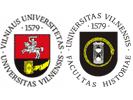Introduction
My aim in this paper is to shed a new light on the question of how the configuration of postwar Central and Southeastern Europe was shaped during the Second World War by the USSR through its relations with the Communist Party of Yugoslavia (the CPY). Relationships between the CPY and the Soviet Union in 1941–1945 depended on the concrete military situation in Europe, and on the diplomatic relationships between the Soviet Union and the other members of the Alliance. For that reason, the Soviet Union and the CPY were cooperating in two directions during the Second World War. The concrete military situation in the battleground of the Soviet Union after the outbreak of the “Barbarossa” in June 1941, and, the Soviet political plans after the end of war in terms of the reorganisation of Europe determined their interconnections.
The complexity of relationships between the Soviet Union and the CPY has to be seen through the diplomatic relations between the USSR and the officially Moscow recognised Yugoslav government-in-exile located in London. Soviet policy toward Yugoslavia was divided into two spheres. The first concerned the CPY and the second involved the Yugoslav government in London. Soviet–Yugoslav relations depended primarily on Moscow’s relations with London and Washington, particularly in regard to the question of the opening of a second military front in Europe. During the course of the war, when the opening
__________________________________________
* I wish to thank Professor Edvardas Gudavičius, a member of Lithuanian Academy of Science, and Assistant Professor Algirdas Jakubčionis, University of Vilnius, Lithuania for the reviewing of this article, and Professor Dovid Katz, director of Center for Stateless Cultures, University of Vilnius, Lithuania who revised English original of the author. This article is dedicated to all Yugoslavs who fought for the national liberation either on the side of the communist National Liberation Movement of Yugoslavia (the partisans) or on the side of the Royal Yugoslav Army in the Fatherland (the četniks) in the Second World War, but believed that a real national freedom and the personal liberty would come after the war. |


 dizainas ir programavimas giriaus
dizainas ir programavimas giriaus  dizainas ir programavimas giriaus
dizainas ir programavimas giriaus